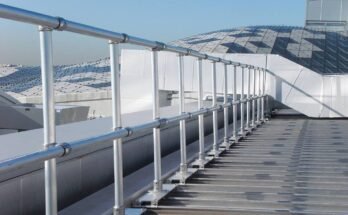From tungsten inert gas (TIG) to assembling welding, it can be hard to keep the track of Best perforated metal fabrication technique. Don’t worry! We are here to help you keep understand all the ins and outs of this technique.
So let’s get started!
What exactly is perforation?
It’s a manual or mechanic punching or stamping to create a pattern of slots, decorative shapes, or holes, as per the requirement.
Sheet metal fabrication use cold-rolled steel, stainless steel, brass aluminium, galvanised sheet metal, copper, stainless sheet, plastic, and titanium for the technique.
Industrial Use of Perforated Metal
- Automotive
Oil filters, running boards, air filters, silencer tubes, radiator grilles, flooring, ventilation grids, motorcycle silencers, and tractor engine ventilation
- Construction
Acoustic panels, stair treads, pipe guards, ventilation grilles, Ceiling noise protection, facades, signboards, and sun protection slats
- Chemical & energy
Centrifuges, Filters, drying machine baskets, gas purifiers, battery separator plates, water screens, mine cages, liquid gas-burning tubes, and coal washing
- Architecture
Sunshade, column covers, infill panels, cladding, metal signage, fencing screens, and site amenities
- Material Development
Glass reinforcement, dyeing machines, cement slurry screens, cinder screens, felt mills and textile printers, and blast furnace screens
- Food & beverages
Wine vats, silo ventilation, beehive construction, grain dryers, fish farming, fruit and vegetable juice presses, sorting machines, cheese moulds, coffee screens, and baking trays
When was it first used?
The perforated metal technique has been around for more than 150 years. Besides, it has been around 1401 when primordial furnaces were used to pile alternated iron layers and charcoal to liquefy steel. These were used as an efficient tool to separate coal in the late 19th century. Nonetheless, the very first perforates were labourers who used to manually punch the individual hole in the sheet.
This was an inconsistent and inefficient method. This led to a new technique like using a series of needles designed in a required hole pattern. The latest methods involve using technology and machines such as die & punch press, rotary pinned perforation roller, and laser perforation.
Nowadays, we have a massive collection of machines and technology to make the process including perforation easier.
What are the Benefits?
- Perforated metal reduces the sound level. When used in acoustic devices, it can reduce health risks from noise. This is a perfect idea for those who work in a building near concert halls, a busy highway, and facilities with heavy machinery.
- Depending on the location of a building, solar radiations can be reduced by 78%
- Excellent shade and airflow can be provided to the buildings that require ventilation by using perforated metal sun protection screen
Do they go by other terms?
The metal is replaceable with a plate, screen, or sheet.
The modern technology has made eliminated the traditional perforated technique, which is for good. Now, these metal sheets can be used in minutes
Final thoughts…
There are abundant ways to use perforated metal. It depends on the requirement and innovation. So, whenever you are about to hire experts for perforated metal panels, considering this guide is a no brainer.




